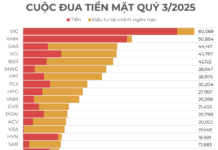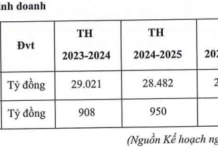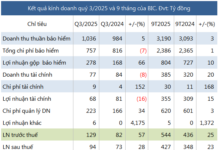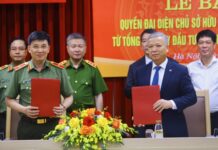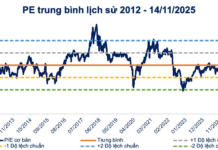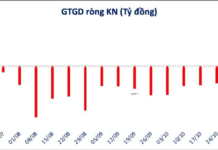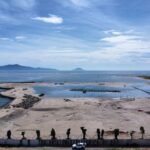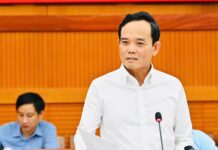On the morning of September 17th, in a conversation with a reporter from Bao Nguoi Lao Dong, Mr. Tran Van Nhan (born in 1963, residing in An Luong village, An Luong commune, Gia Lai province) stated that he had submitted a complaint to the Provincial Party Secretary, the Chairman of the Provincial People’s Committee, local authorities, and the press. He accused Mr. Tran Quoc Vinh, Secretary of the An Luong Commune Party Committee, of allegedly covering up violations in public land management and retaliating against whistleblowers.
Video: Illegal construction spanning hundreds of square meters (gray-roofed warehouse) by Mr. Lai My Sinh on public land.
According to Mr. Nhan, earlier this year, he submitted a complaint to the People’s Committee of My Chanh commune, Phu My district, Binh Dinh province (formerly), reporting that his neighbor, Mr. Lai My Sinh (born in 1982, owner of a construction materials business), had illegally constructed a warehouse spanning hundreds of square meters on a stream behind his house. This land is public property managed by the state.
Instead of decisively addressing Mr. Lai My Sinh’s violations, Mr. Tran Quoc Vinh, who was then Secretary and Chairman of the My Chanh Commune People’s Committee (formerly), took actions that unfairly targeted the whistleblower.
Specifically, during a meeting on May 14, 2025, chaired by Mr. Tran Quoc Vinh, instead of addressing Mr. Sinh’s violations, Mr. Nhan was falsely accused of “encroaching on 112.6 square meters of public land.” Subsequently, the commune leadership proposed a “solution” for both parties to maintain the status quo, with removal only when the state initiates a project.
Mr. Nhan asserts that the land he is using is legal and, in fact, falls short by approximately 40 square meters compared to his land use certificate. Meanwhile, Mr. Sinh’s illegal construction remains on public land, despite local authorities issuing a demolition order on May 22, 2025.
“After the local authorities issued the demolition order, Mr. Sinh only removed a few sheets of roofing as a formality. The concrete foundation, nearly 2 meters high, remains intact on the stream. However, Mr. Vinh told residents and reported to authorities that Mr. Sinh had demolished the illegal structure. The real issue is that the new foundation causes flooding for nearby households during heavy rain,” Mr. Nhan expressed frustration.
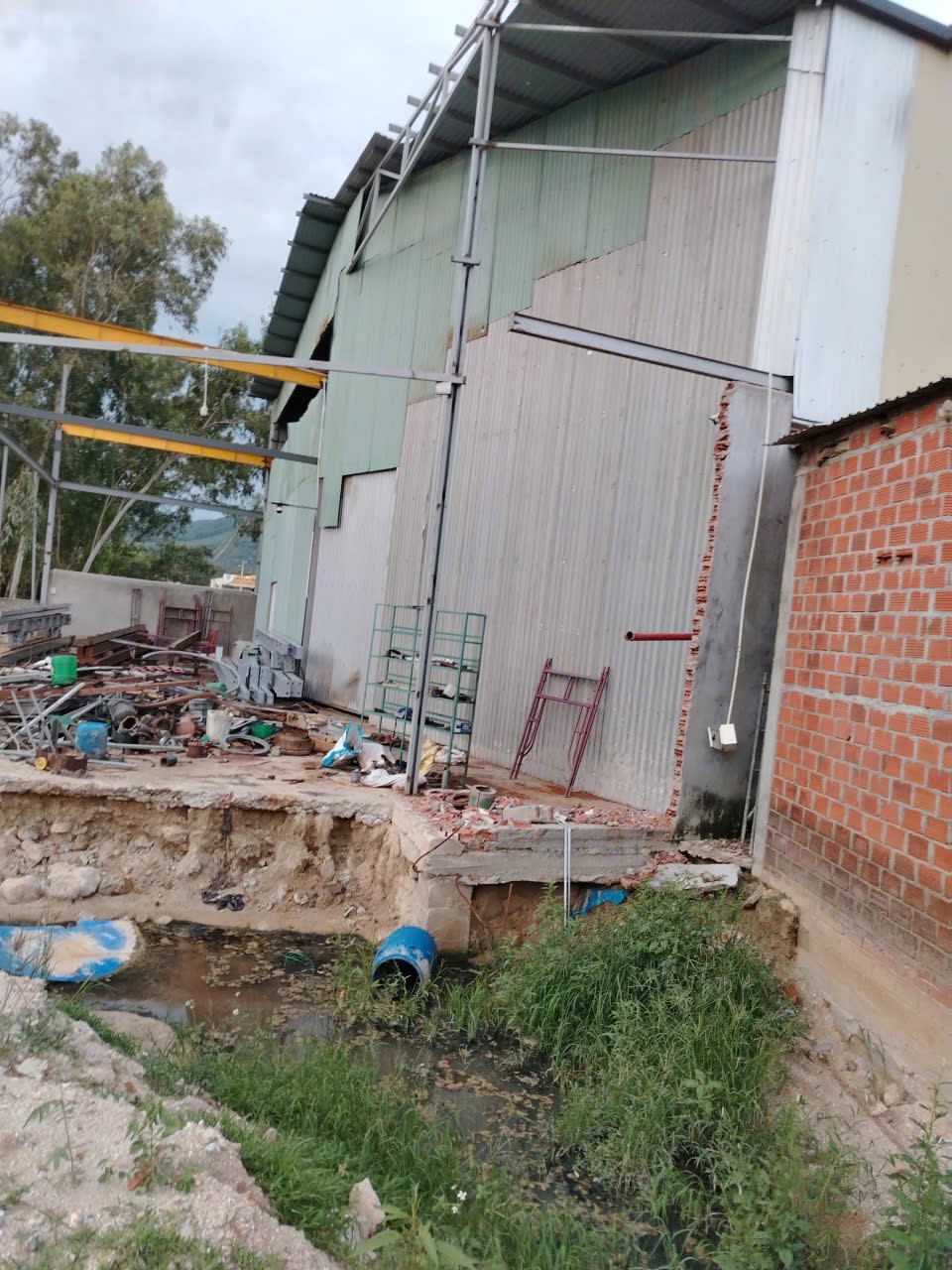
After removing a few sheets of roofing as a formality, the illegal construction by Mr. Lai My Sinh remains largely intact, causing flooding for many households in the neighborhood during heavy rain.
Mr. Nhan continued, “For many years, my family’s rice warehouse has frequently flooded, causing damage worth hundreds of millions of dong, yet the illegal structure remains unabated.”
In a discussion with reporters about the incident, Mr. Tran Quoc Vinh claimed that Mr. Sinh had already demolished the illegal structure. Regarding the remaining foundation on the stream, he stated it is public land and does not affect anyone. As for the false accusation against Mr. Nhan, Mr. Vinh explained it was due to a “measurement error by commune officials.”
Given these grievances, Mr. Nhan urges Gia Lai provincial authorities to conduct a comprehensive inspection, clarify the responsibilities of Commune Secretary Tran Quoc Vinh, enforce the demolition of the violating structure, and implement measures to protect whistleblowers as prescribed by law.
As previously reported by Bao Nguoi Lao Dong, on December 30, 2022, the former My Chanh Commune People’s Committee issued an administrative penalty decision, determining that Mr. Sinh had encroached on 198.8 square meters of public land, imposing a fine of 2.5 million dong, and mandating the restoration of the original state within 10 days. On May 22, 2025, the commune issued a forced demolition order, requiring Mr. Sinh to remove the structure. However, as of now, after removing a few sheets of roofing as a formality, the illegal construction by Mr. Sinh remains largely intact.
Greenlighting a Residential Project: Gia Lai’s 1.8 Trillion VND Endeavor
Let me know if you would like me to tweak this title or provide additional suggestions.
On September 6th, the People’s Committee of Gia Lai province announced its decision to approve the investment proposal for the Nam De Gi Residential Area project, spanning across 15.15 hectares.
The Ultimate Getaway: Unveiling the Master Plan for Gia Lai’s Lake Bien-Chu Dang Ya Tourism Mega Project
With a vast research area of 6,300 hectares, Gia Lai envisions transforming Bien Ho – Chu Dang Ya into a national eco-tourism and cultural hub with international allure. This ambitious project aims to propel the Central Highlands onto the global stage, offering a unique and captivating experience unlike any other.
The Great Hanoi Vehicle Inspection: A Comprehensive Review of Gas and Petrol-Powered Automobiles
The Hanoi authorities have instructed 126 communes and wards to survey and identify potential land plots for the installation of charging stations catering to clean energy vehicles. This initiative involves the comprehensive survey and data collection of the current gasoline, diesel, and electric car and motorbike fleet, facilitating a seamless transition to cleaner transportation options.











